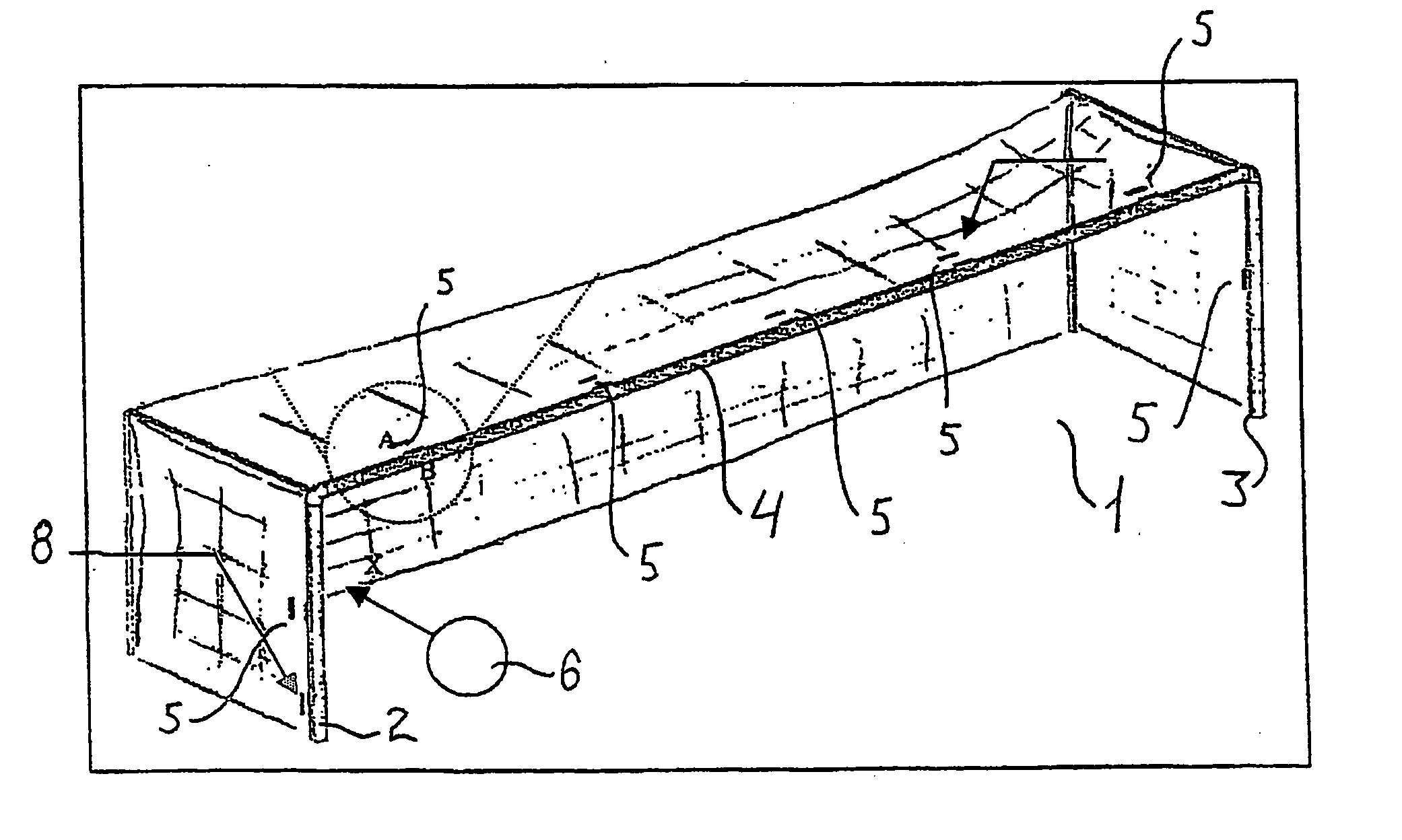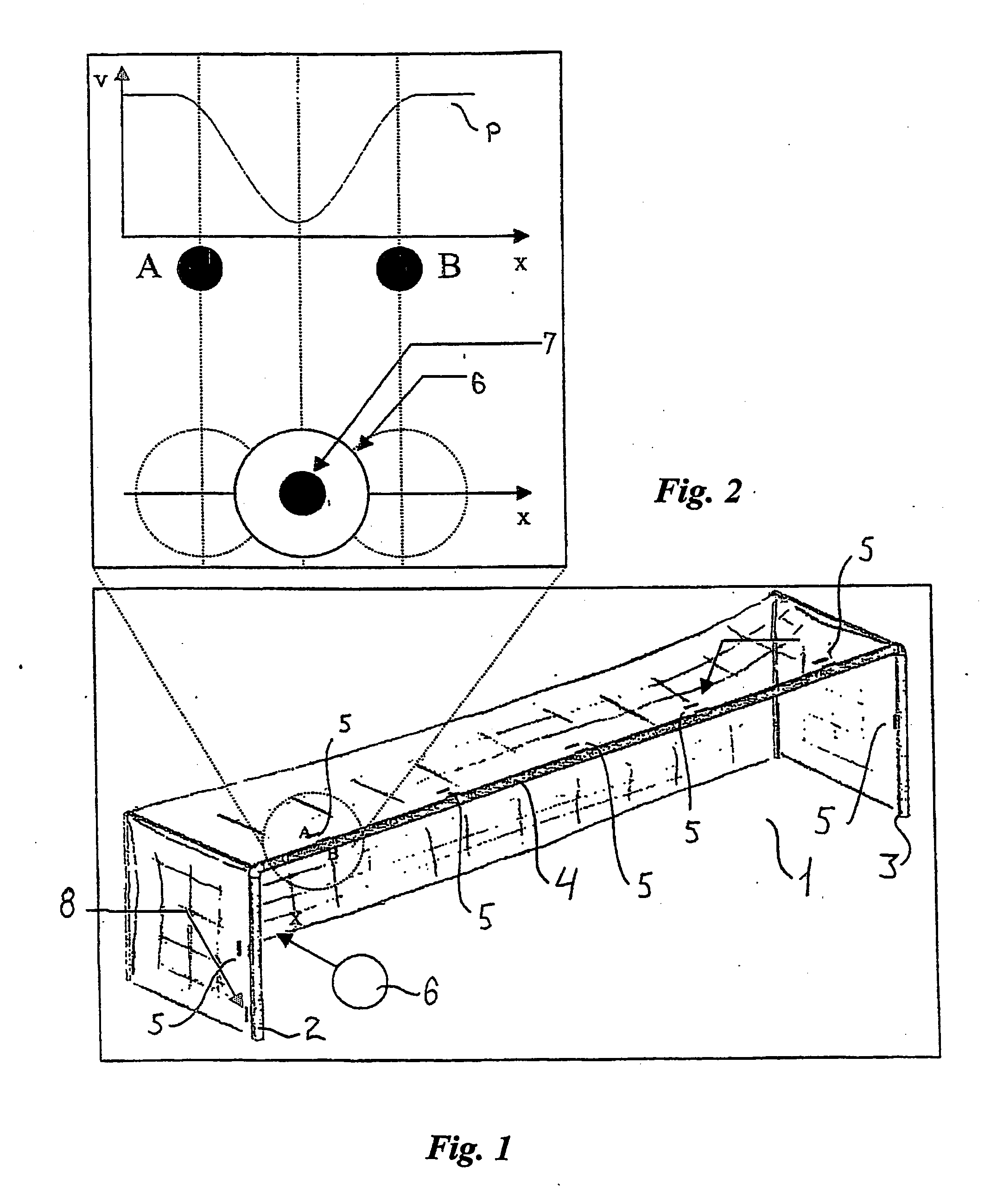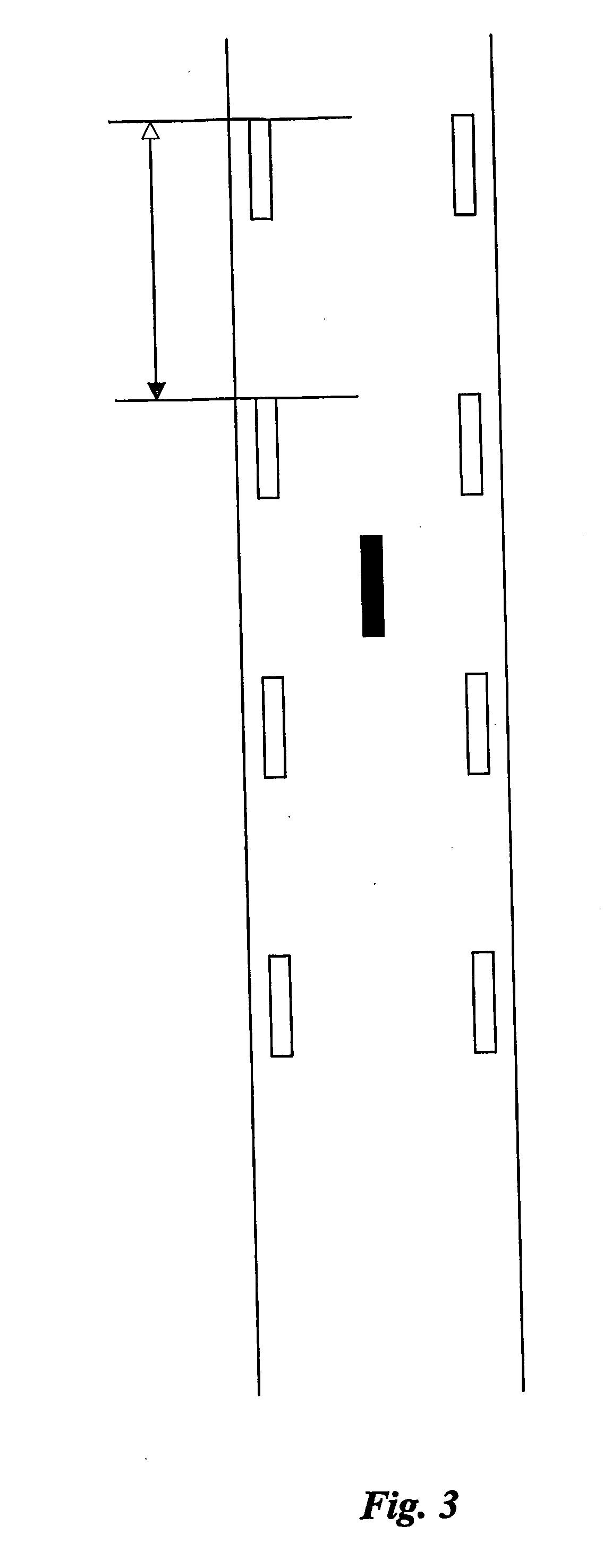Goal detector for detection of an object passing a goal plane
- Summary
- Abstract
- Description
- Claims
- Application Information
AI Technical Summary
Benefits of technology
Problems solved by technology
Method used
Image
Examples
Embodiment Construction
[0032] A football goal 1 is shown in FIG. 1 having a left goalpost 2, a right goalpost 3 and a horizontal crossbar 4 there between. The goal 1 is placed on a sports field with the posts 2, 3 placed on the centre of the goal line (not shown) and the crossbar 4 being parallel with and directly above the goal line in accordance with the laws of FIFA, so that the goal line, the posts 2, 3 and the cross bar 4 delimits a flat target plane.
[0033] Five pairs of antennas 5 are arranged equidistantly on the crossbar 4 and two pairs 5 are arranged each on one post 2, 3. Each pair of antennas 5 comprises two identical antennas A, B that are arranged parallel with a displacement only in the direction perpendicular to the target plane. The antennas A, B are arranged so that the midway position is situated precisely half the diameter of the ball from the back edge of the goal line. A goal is scored when the whole of the ball pass over the goal line, between the goalposts 2, 3 and under the cross ...
PUM
 Login to View More
Login to View More Abstract
Description
Claims
Application Information
 Login to View More
Login to View More - R&D
- Intellectual Property
- Life Sciences
- Materials
- Tech Scout
- Unparalleled Data Quality
- Higher Quality Content
- 60% Fewer Hallucinations
Browse by: Latest US Patents, China's latest patents, Technical Efficacy Thesaurus, Application Domain, Technology Topic, Popular Technical Reports.
© 2025 PatSnap. All rights reserved.Legal|Privacy policy|Modern Slavery Act Transparency Statement|Sitemap|About US| Contact US: help@patsnap.com



